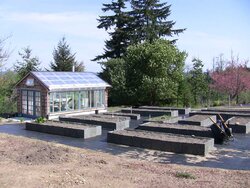Well, I got done with my wifes 15 X 30 Garden, and now she would like a few raised beds for additional plants. (I would like a few as well, as I wanted to start a herb garden, and like the idea of not bending over as much)
Is there a rule of thumb on how deep they should be?
I have some left over decking that it perhaps 5-6" high when on its end, would this be deep enough? (I will be able to dig perhaps 4-6 inches of soil below the raised bed, but after that its very rocky/ledge) I guess in total, we will have about 12 inches of soil in depth....maybe just stick to small plants?
Is there a rule of thumb on how deep they should be?
I have some left over decking that it perhaps 5-6" high when on its end, would this be deep enough? (I will be able to dig perhaps 4-6 inches of soil below the raised bed, but after that its very rocky/ledge) I guess in total, we will have about 12 inches of soil in depth....maybe just stick to small plants?


